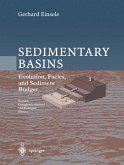Historically pore pressure evaluation in exploration areas has been based on empirical relationships between drilling parameters, wireline logs and the mud weight needed to drill the wells. In the 60's and early 70's drilling for kicks was the method used in the Gulf of Mexico. These events formed the data base people like Eaton built their empirical relationships. The normal compaction trend was established in the mudrocks by superimposing data from a large number of wells in a basin. This technique was exported to the North Sea and has proven very difficult. The British Geological Survey has collected core samples from 576 sites in the offshore area of the British Islands. By comparing them with porosities collected from the deep oceans (DSDP/ODP sites) it is suggested that the porosities in the shallow section in the North Sea are anomalously low. It is suggested that large volumes of Quaternary sediments was deposited by glacial activity during the Quaternary period.
Bitte wählen Sie Ihr Anliegen aus.
Rechnungen
Retourenschein anfordern
Bestellstatus
Storno








